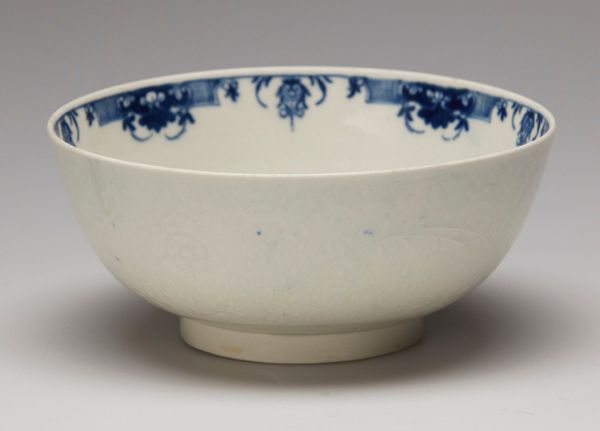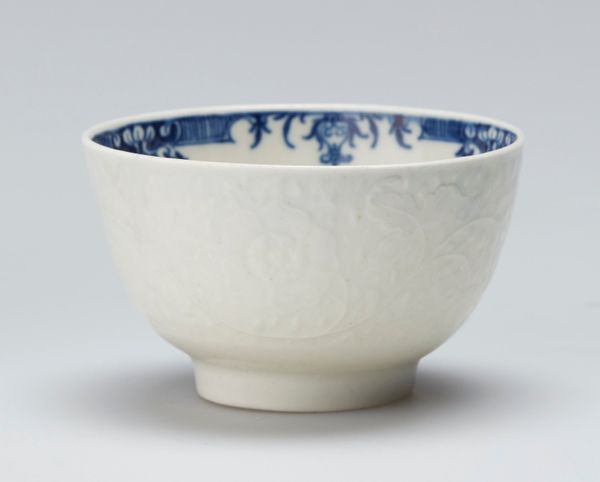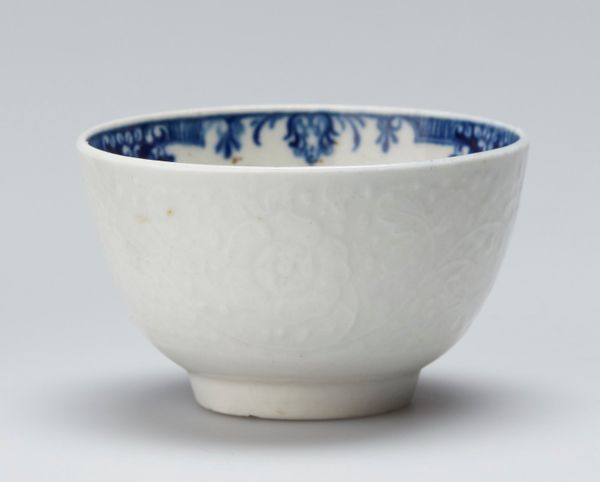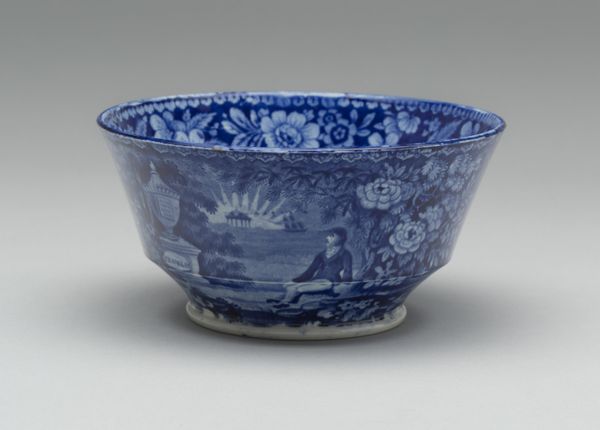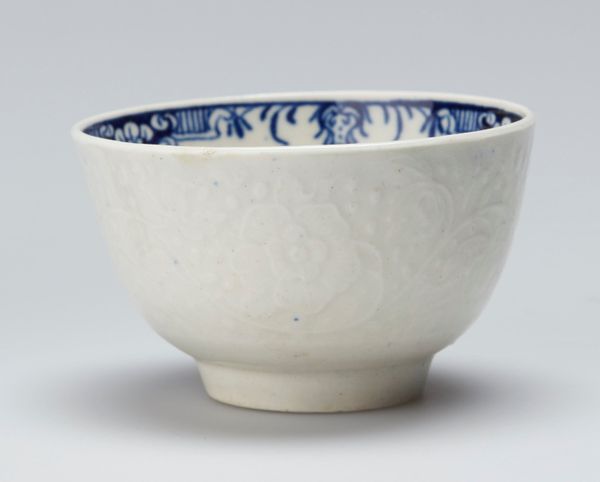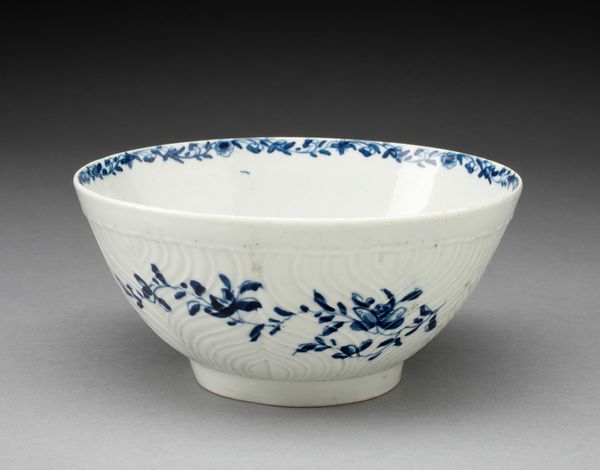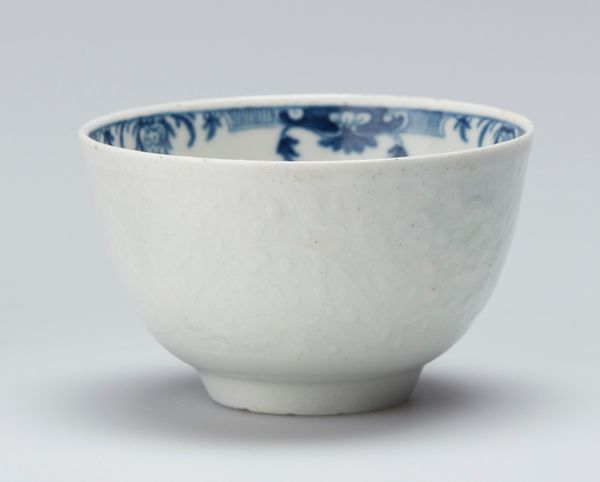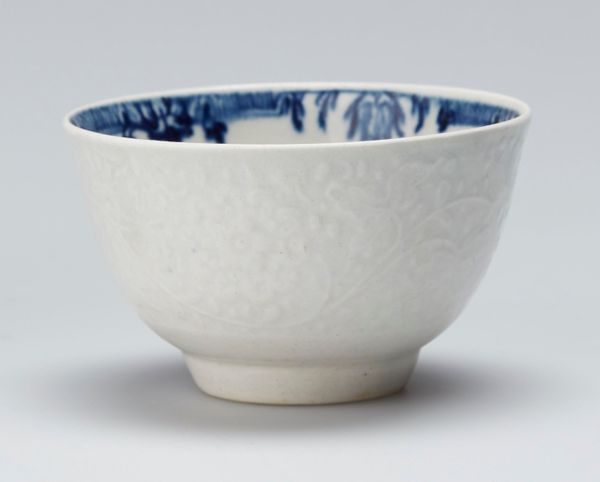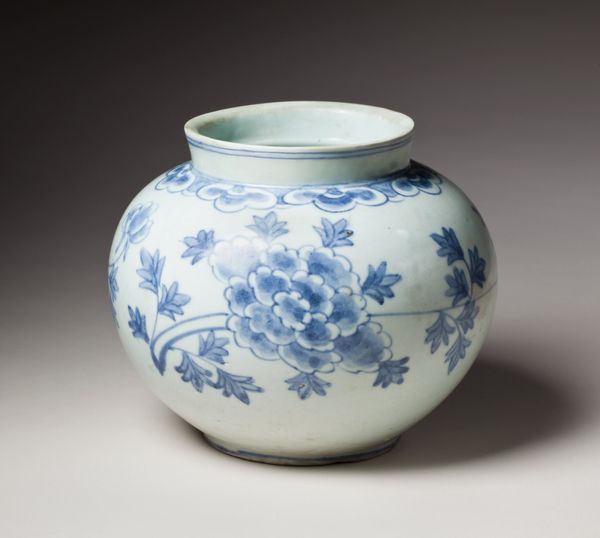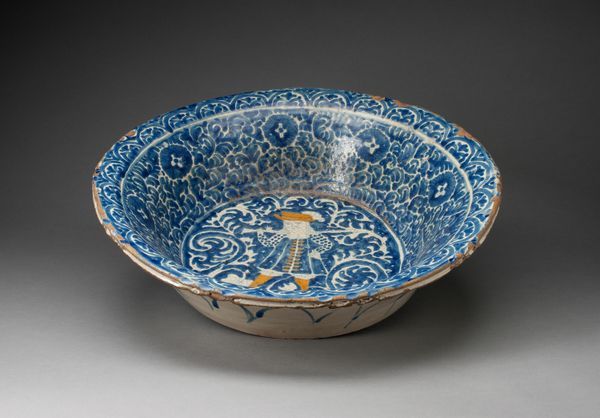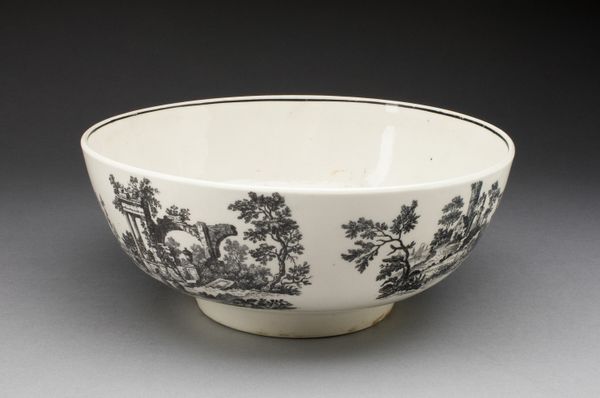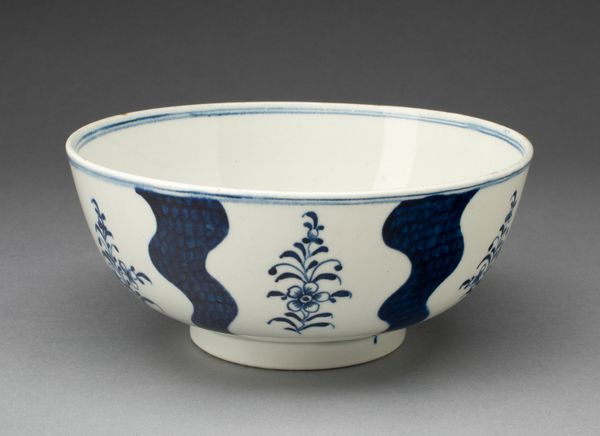
Tea cup c. 18th century
0:00
0:00
ceramic, porcelain
#
ceramic
#
porcelain
#
ceramic
#
decorative-art
Copyright: Public Domain
This tea cup was made by the Worcester Porcelain Works in England, a company founded in 1751. In the 18th century, porcelain teaware like this one was not merely functional; it signified wealth, taste, and global trade connections. The blue and white design, reminiscent of Chinese porcelain, reveals the influence of the East India Company and the fashion for 'chinoiserie' that swept Europe. The floral patterns suggest an appreciation of nature, a value promoted by elite cultural institutions. Tea drinking itself became a social ritual, a performance of gentility, and the possession of fine porcelain was central to the domestic routines of the rising middle classes. To fully appreciate its cultural significance, one might consult period trade records, etiquette manuals, and social histories. The value of such an object lies not just in its aesthetic appeal but in the complex web of social meanings it embodies.
Comments
No comments
Be the first to comment and join the conversation on the ultimate creative platform.
